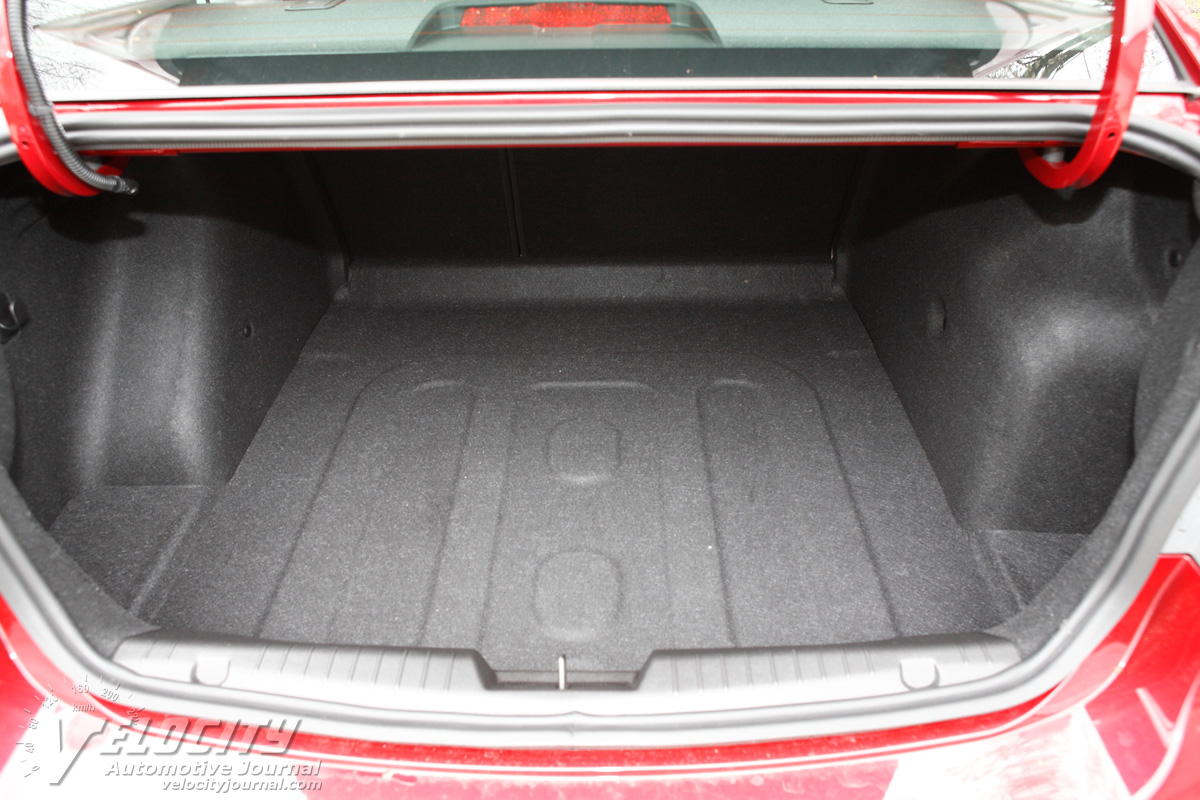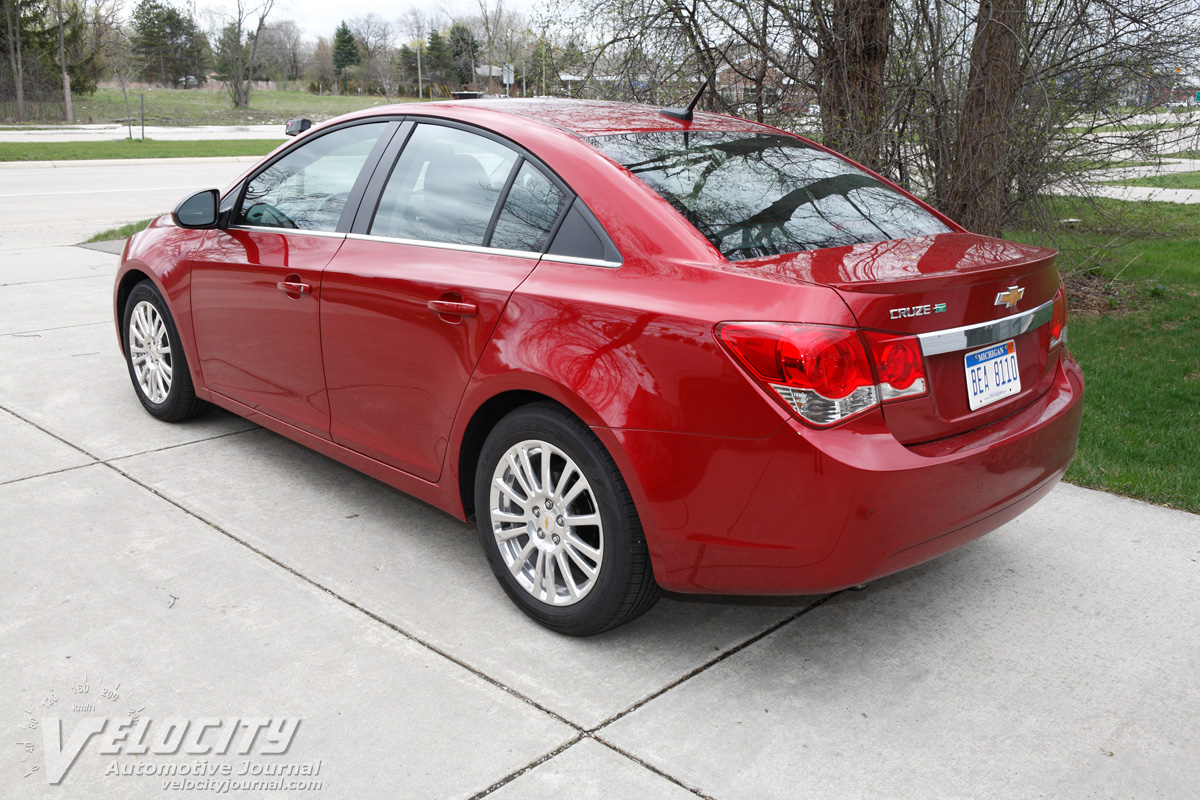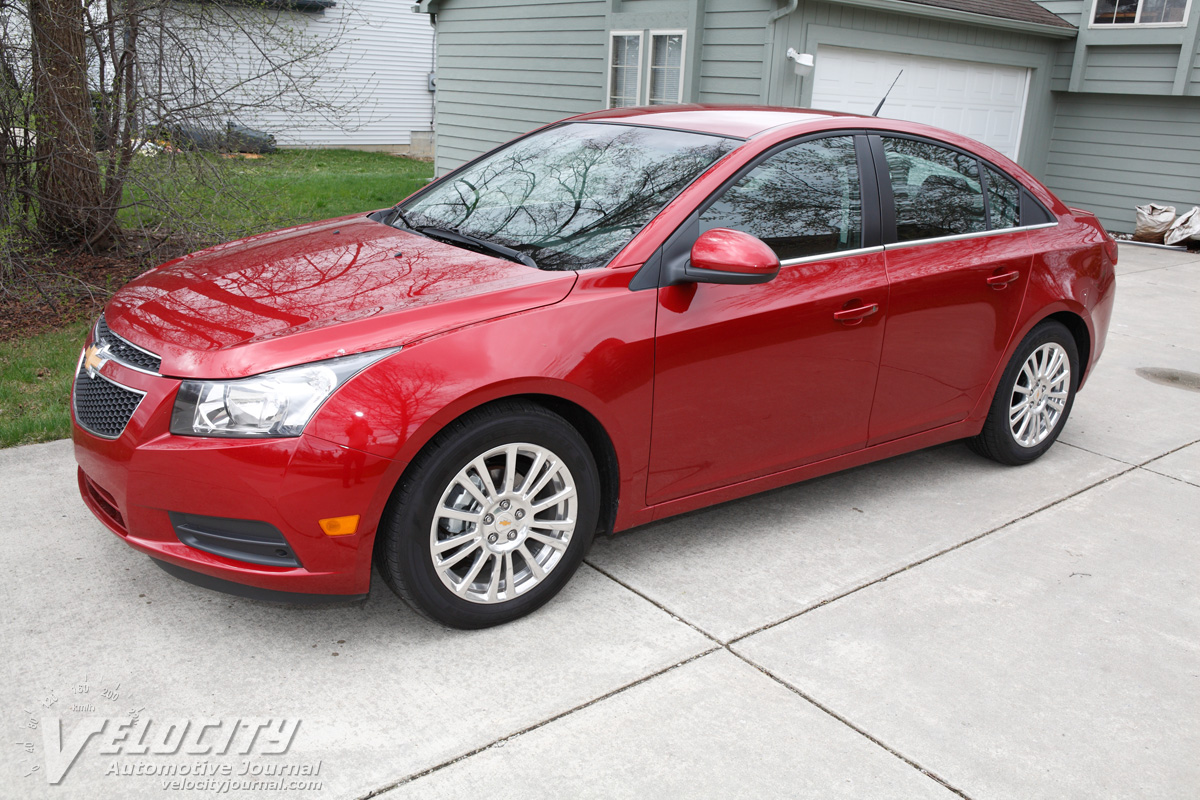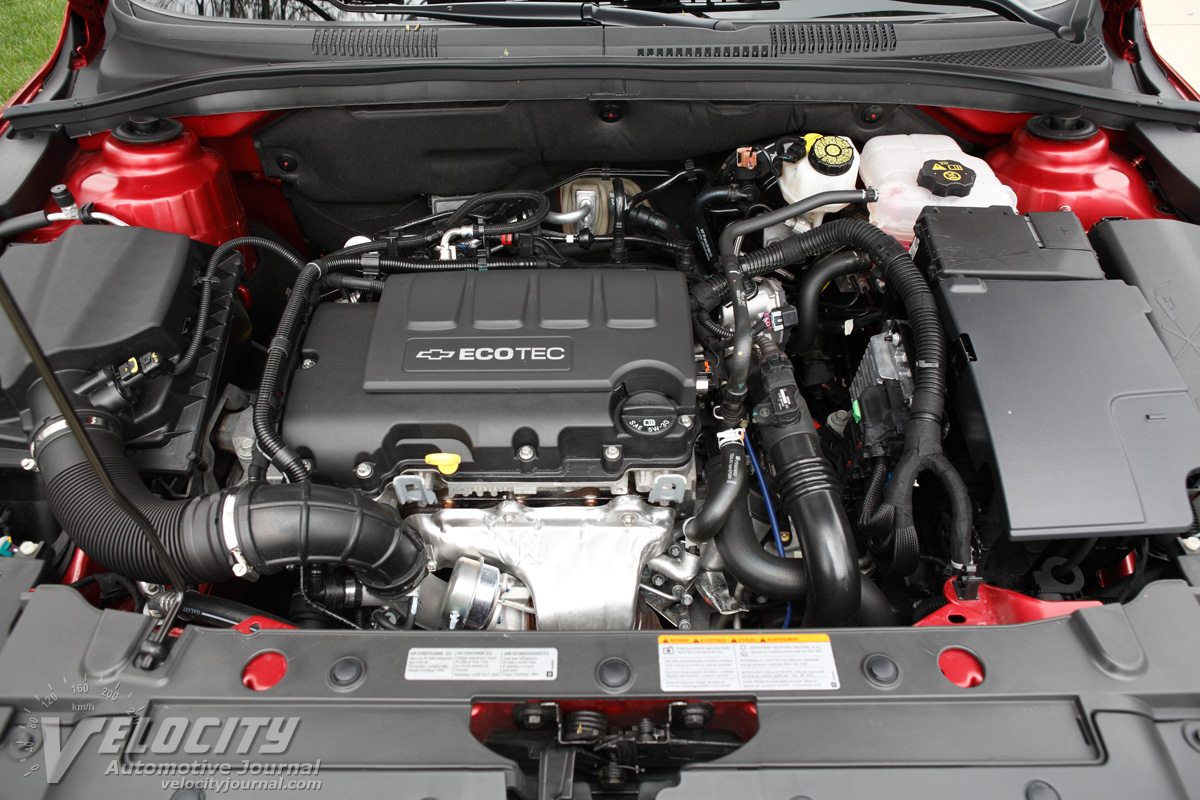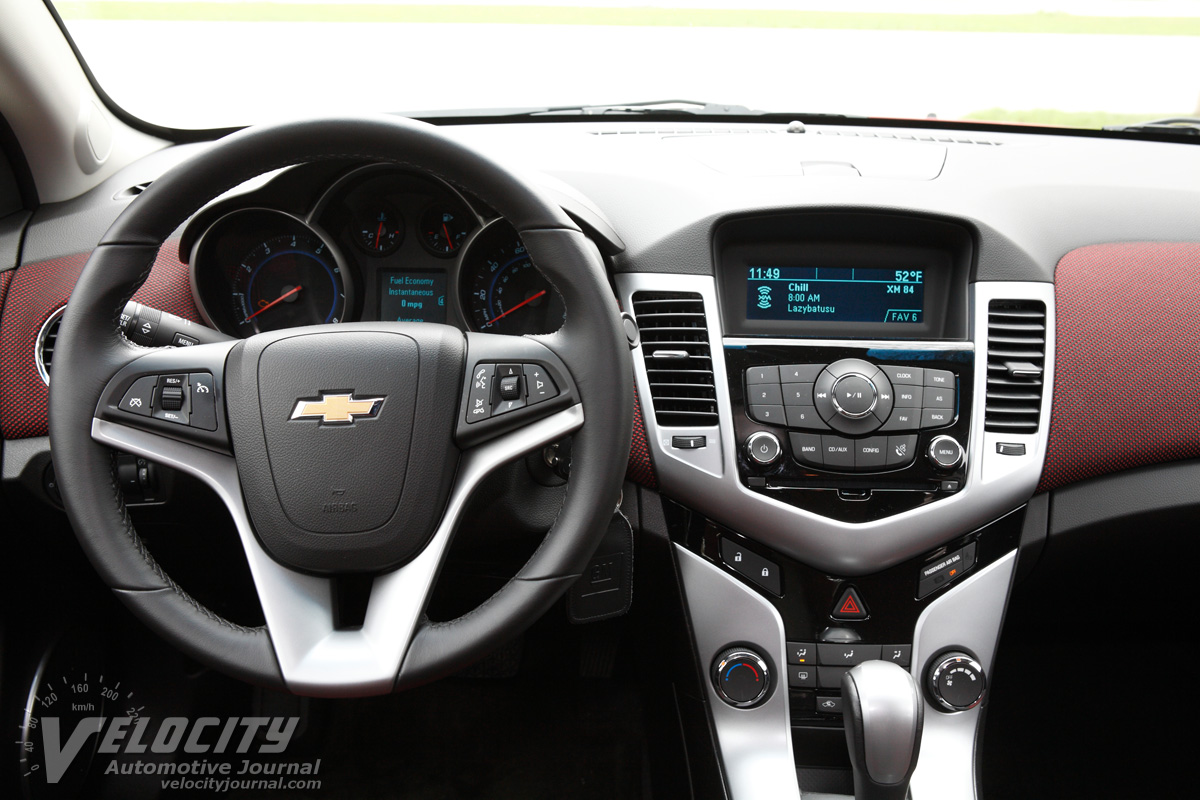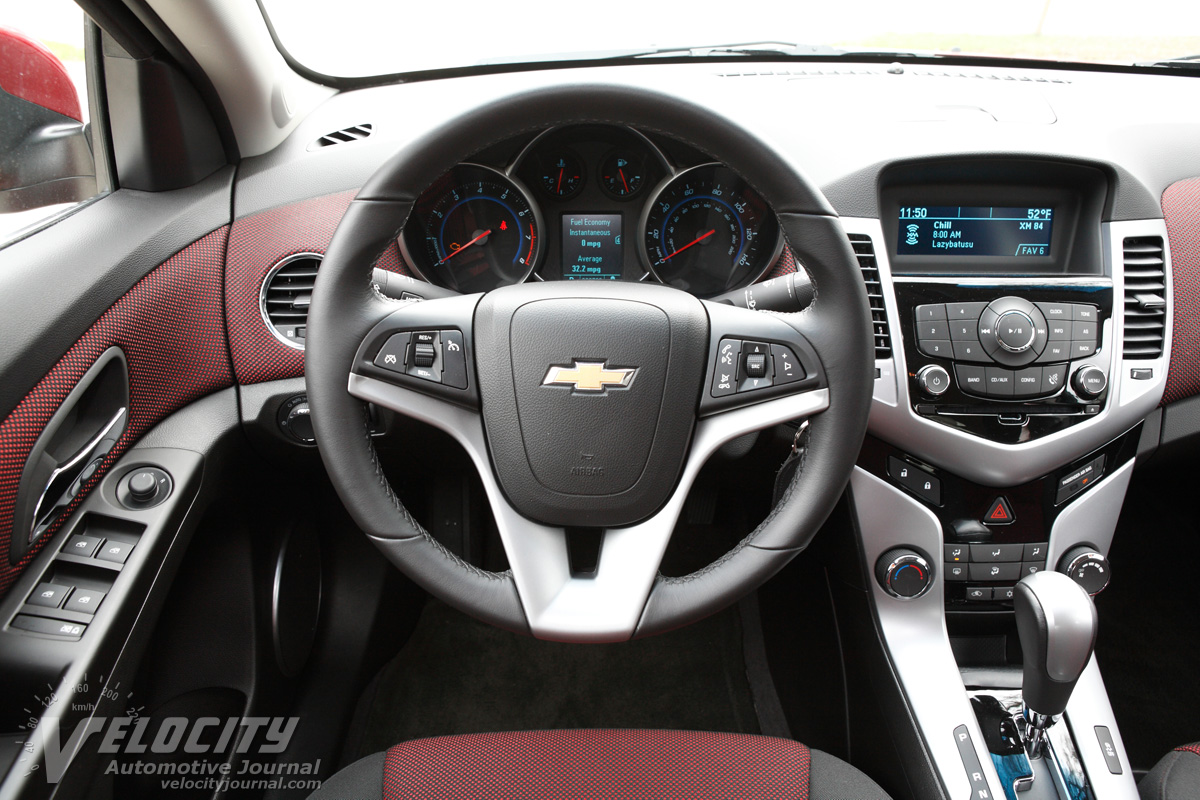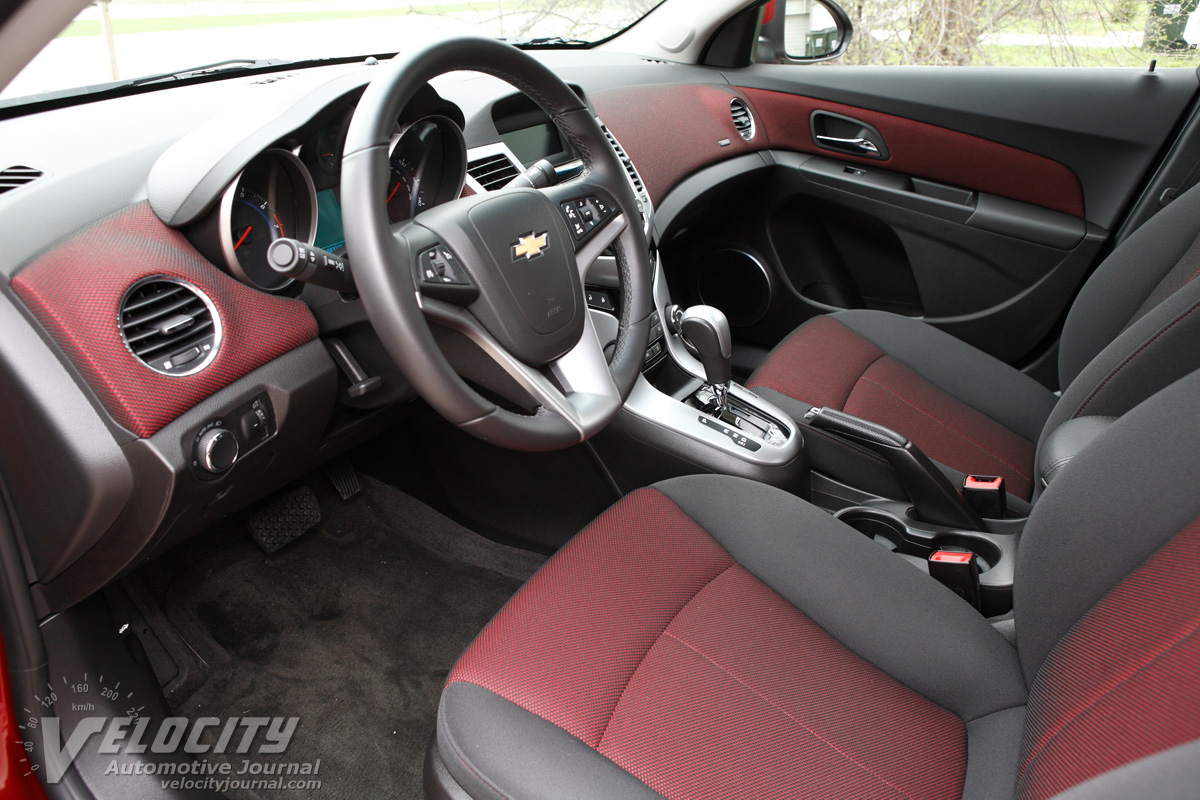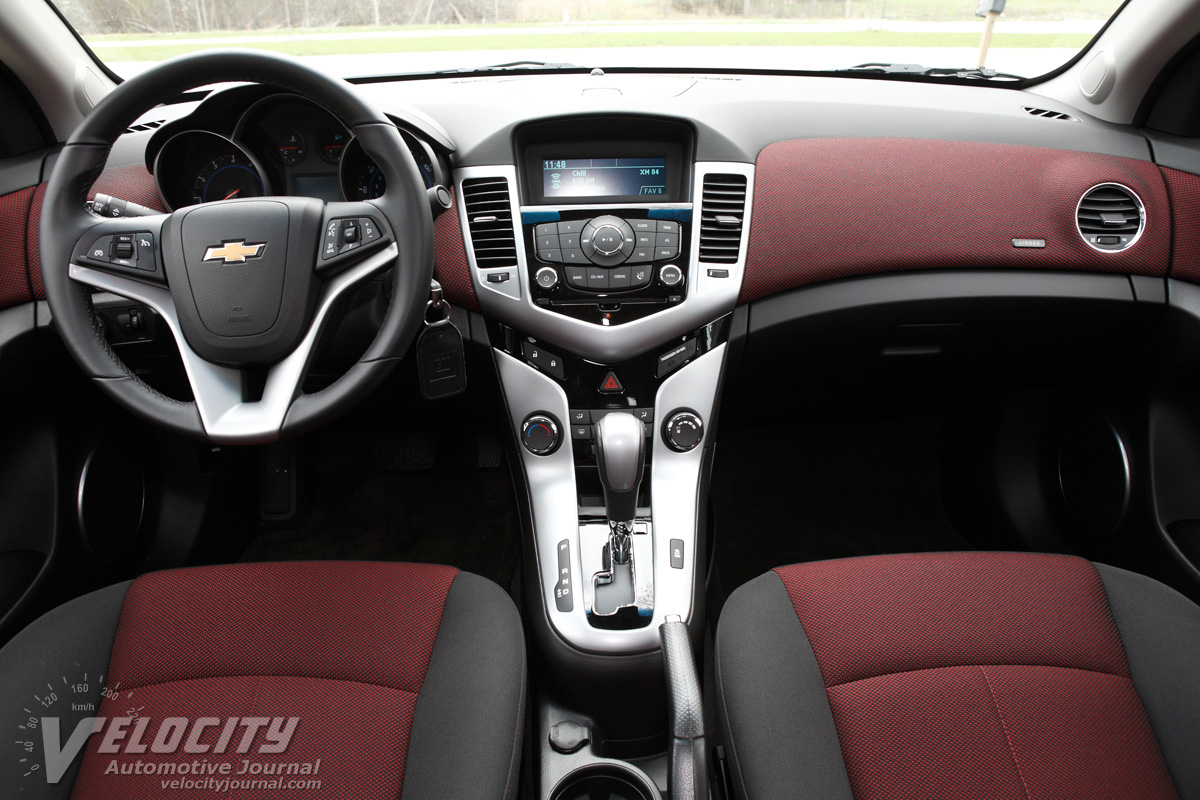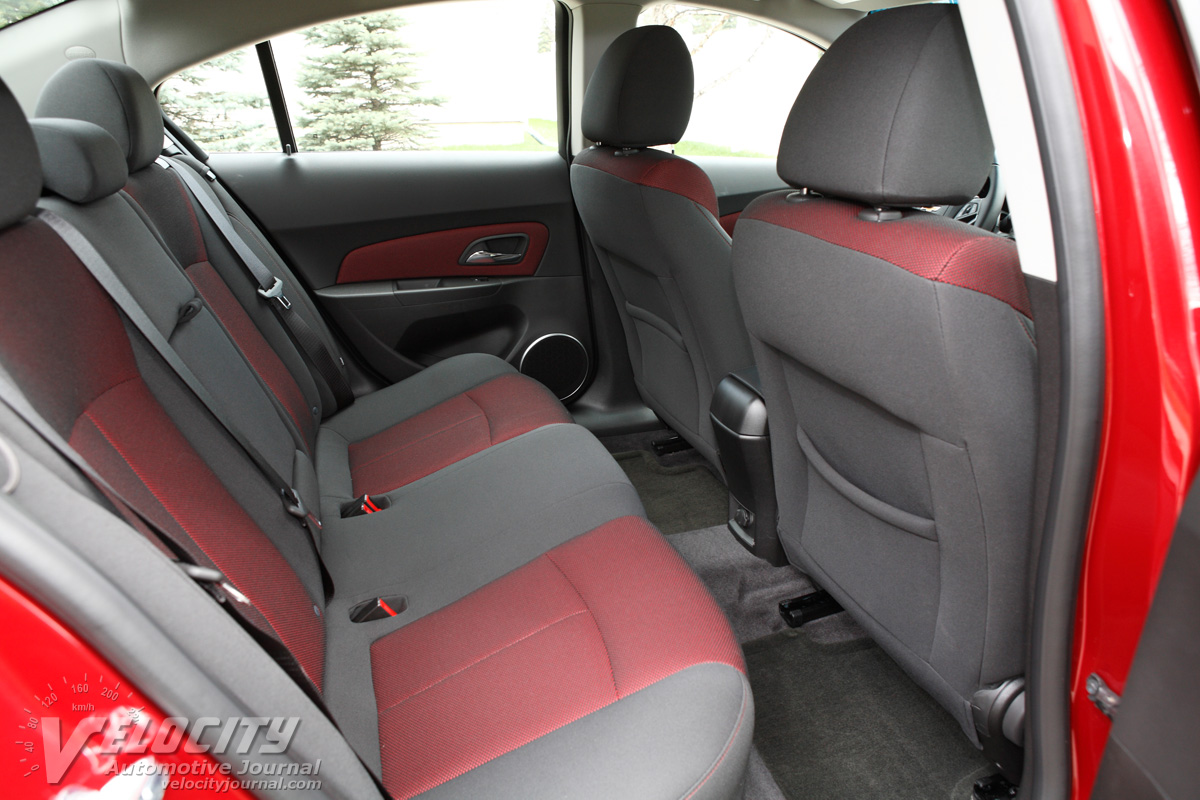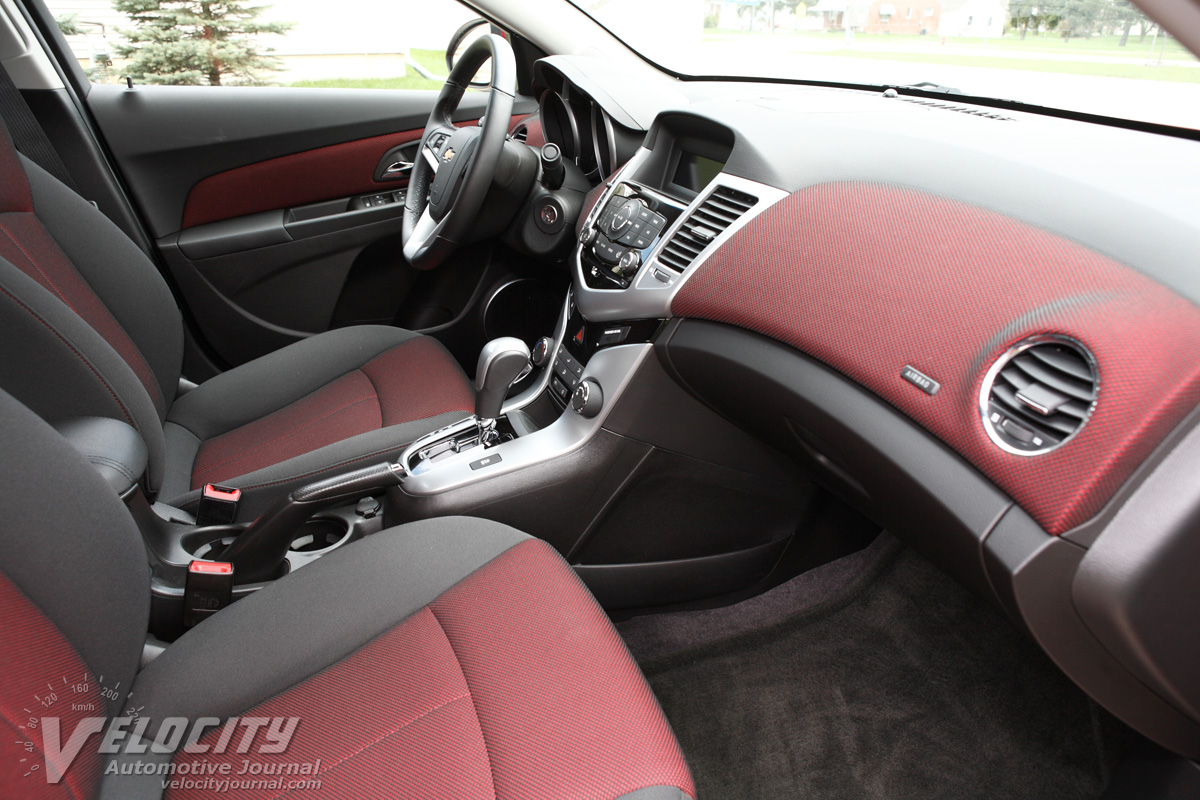2011 Chevrolet Cruze ECO
04/28/2011
Shahed Hussain
Replacing the unimpressive Cobalt, the Chevrolet Cruze is proof that GM no longer considers small cars as an afterthought. Continued high gas prices have encouraged Chevrolet to introduce the Cruze ECO as its most fuel-efficient non-hybrid vehicle. Among compact sedans, the Cruze takes on the perennially best-selling Corolla and Civic, along with the new Focus and Elantra.
The Cruze lineup consists of five models, starting with the base LS to the premium LTZ. The 2011 ECO falls in the middle of the range at $18,175. Added options on our tested vehicle included the Connectivity Plus Cruise Package ($525), ECO Driver Convenience Package ($685), 6-speed automatic ($925), Crystal Red Metallic Tintcoat paint ($325), Compact Spare Tire ($100). The sticker price totaled up to $21,455, including the $720 destination charge.
Although Chevrolet positions the ECO as the fuel economy leader in the model range, the actual mechanical differences between the Cruze ECO and the LT and LTZ are relatively minor. The 138-bhp 1.4L turbocharged inline-4 is unchanged, but the Cruze ECO gets taller (lower numerical) final drive ratios for the standard 6-speed manual. Aerodynamic drag reduction measures include an air shutter in the front grille, a unique air dam, and low rolling resistance tires. The 2011 Cruze ECO is rated at 26/37 MPG (city/hwy.) with the optional 6-speed automatic.
Compared to other automatic transmission-equipped compact sedans, the Cruze ECO is not especially notable. For instance, the 41 MPG Civic HF is priced at $19,455, and the 40-MPG Ford Focus SE with the SFE package comes in at $19,875. The Elantra GLS also achieves 40 MPG, with typical Hyundai value pricing at $18,205. All of these alternatives provide superior highway fuel economy at a roughly comparable price. Although unlikely to be a popular choice, the 6-speed manual Cruze ECO gets an exceptional 42 MPG on the highway, surpassing any non-hybrid sedan available.
Unlike previous compact Chevrolets, the Cruze benefits from an attractively designed interior. On our test vehicle, red fabric inserts on the dashboard matched the gray/red seat upholstery. The front seats offer adequate support, while the textured fabric prevents slipping around in the seat. The driver's seat adjustments consist of power fore/aft controls and manual rake. The rear seats have decent legroom and headroom, but the cushion is too short for taller passengers.
Behind the wheel, the gauge cluster consists of an 8,000 RPM tachometer, and 140-MPH speedometer, accompanied by smaller coolant temperature and fuel level gauges. A multi-function display shows essential vehicle and trip computer information. The leather-rimmed steering wheel includes audio, Bluetooth phone, and cruise control buttons. A gloss black and matte silver center stack houses audio and climate controls. The gated shifter for the optional 6-speed automatic has a manual shift mode.
Although the Ecotec 1.4L has the least displacement in its class, the turbo boosts output to 138-bhp @ 4900 RPM and 148 lb.-ft. @ 1850. The Ecotec's cast iron block is topped with an aluminum head and variable valve timing. Turbo lag is imperceptible, and the turbo is tuned to fatten up the torque curve at low RPM. Midrange throttle response is surprisingly robust, especially considering that automatic transmissions mated to tiny 4-cylinder engines are a recipe for sluggish performance. This Ecotec turbo provides world class levels of refinement, with none of the buzz and thrash that plagued previous GM inline fours. Out on the highway, engine noise remains unobtrusive, making the Cruze ECO ideal for long commutes or road trips.
All Cruze models share the Hydra-Matic 6T40 automatic, but the standard 6-speed manual has taller fifth and sixth gear ratios, improving fuel consumption. The automatic shifts smoothly and intelligently; we rarely needed to use the available manual shift mode. We averaged 32 MPG in mixed city and highway driving.
Chevrolet adopted the commonplace MacPherson strut-type suspension with coil springs, and tubular stabilizer bar for the front suspension. At the rear is a torsion beam, Z-link (except manual transmission Cruze ECO models), coil springs, and dampers. The rack-and-pinion steering is electrically assisted. Goodyear Assurance Fuel Max tires mounted on forged 17-inch alloy wheels reduce rolling resistance and unsprung weight. Brakes consist of 10.5 in. diameter front discs and 10.5 in. diameter drums in back. Rear disc brakes are available on other Cruze models. ABS and Stabilitrak stability control are standard.
A few days spent driving the Cruze ECO revealed suspension tuning intended to provide a comfortable ride over the bumpy and potholed roads common in the upper Midwest. Moderate body roll around curves confirms that the Cruze ECO is no sport sedan, but overall handling is competent. Vague on-center feel through the steering is likely due to the low-rolling resistance tires. Heavy braking causes significant suspension dive. The brakes suffer from a spongy pedal feel and minimal feedback. Despite its uninspiring driving dynamics, we doubt that most customers will be disappointed.
Chevrolet now has a fully competitive compact sedan in its model lineup, and the Cruze ECO is positioned to take advantage of consumer concerns about high fuel prices. For hypermilers, the 6-speed manual is worth considering, especially since when equipped the automatic, the ECO is only marginally more fuel efficient than the LT or LTZ. Although not especially entertaining to drive, the Cruze ECO is perfectly competent sedan requiring few compromises for its above average gas mileage.

